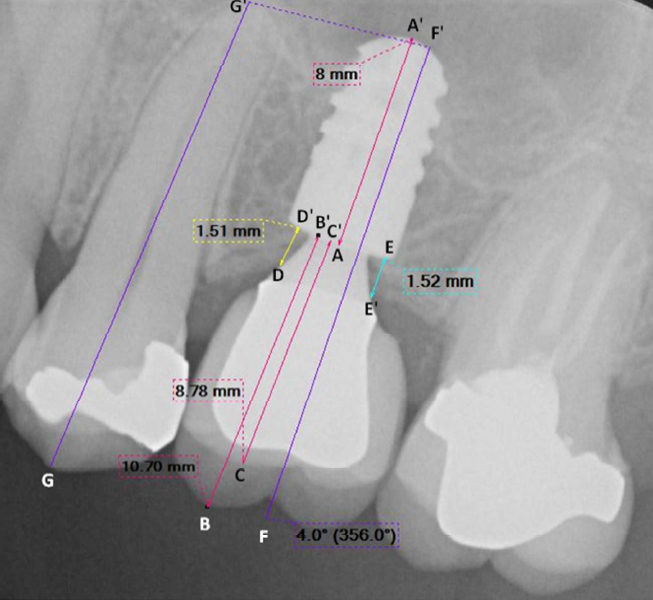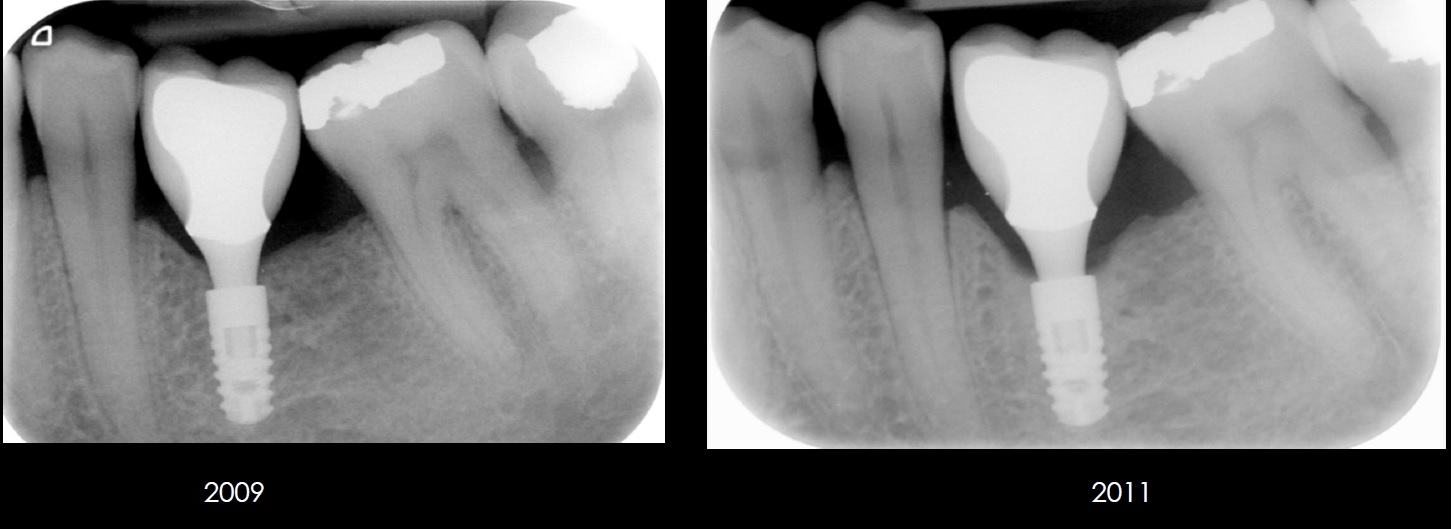IADR Abstract Archives
The influence of Crown/Implant Ratio On Dental Implants (5-8mm)
Objectives: The aim of this study is to evaluate the influence of crown/implant ratio (C/I) with dental implants (5-8mm in length) on the peri-implant marginal bone level changes. We will look for dental implants supporting non-splinted single crown restorations in the posterior maxilla and mandible.
Methods: Data was collected from a single private practice in the UK. This retrospective cross-sectional audit study included all patients with dental implants (5-8mm), placed in two stages in the posterior maxilla or mandible and supporting functioning single non splinted crown restorations, with a follow-up period of at least one year. Standardized digital periapical radiographs, taken by parallel cone technique at day of crown placment and the most recent annual flow-up were retrieved. The C/I ratio, and marginal bone levels (mesially and distally) were measured by a maxillofacial radiologist using Digora® dental digital imaging software (Soredex, Sweden).
Results: One hundred two dental implants placed in 72 patients using two implant systems were eligible for the study.The C/I ratio was not less than 1 for all implants. 26 (24.7%) of the implants had a C/I ratio between 1 and 1.5, 51 (50%) of the implants had a C/I ratio between 1.5 and 2, and 25 (25.3%) of the implants had C/I ratio between 2 and 3. All dental implants were platform switched. The mean follow-up period was 2.21 (±1.01) years. The mean annual marginal bone level changes were gains of +0.09mm (±0.38) on the mesial and +0.12mm (±0.33) on the distal. There was a positive correlation between mesial and distal peri-implant marginal bone level changes r=0.49 (p<0.001). There was no statistically significant correlation between the C/I ratio and the marginal bone level changes mesially or distally (p=0.667).
Conclusions: Within the limitations of this study, dental implants are considered a predictable treatment when restoring a single crown in posterior maxilla and mandible, increased crown/implant ratio in shorter implants has no significant influence on marginal bone loss mesially and distally. For challenging cases in which a residual ridge exhibits severe bone defects or when placement of an implant is limited by anatomical structures, shorter implants may be considered a practical option as they could reduce the need for extensive surgical procedures.
Methods: Data was collected from a single private practice in the UK. This retrospective cross-sectional audit study included all patients with dental implants (5-8mm), placed in two stages in the posterior maxilla or mandible and supporting functioning single non splinted crown restorations, with a follow-up period of at least one year. Standardized digital periapical radiographs, taken by parallel cone technique at day of crown placment and the most recent annual flow-up were retrieved. The C/I ratio, and marginal bone levels (mesially and distally) were measured by a maxillofacial radiologist using Digora® dental digital imaging software (Soredex, Sweden).
Results: One hundred two dental implants placed in 72 patients using two implant systems were eligible for the study.The C/I ratio was not less than 1 for all implants. 26 (24.7%) of the implants had a C/I ratio between 1 and 1.5, 51 (50%) of the implants had a C/I ratio between 1.5 and 2, and 25 (25.3%) of the implants had C/I ratio between 2 and 3. All dental implants were platform switched. The mean follow-up period was 2.21 (±1.01) years. The mean annual marginal bone level changes were gains of +0.09mm (±0.38) on the mesial and +0.12mm (±0.33) on the distal. There was a positive correlation between mesial and distal peri-implant marginal bone level changes r=0.49 (p<0.001). There was no statistically significant correlation between the C/I ratio and the marginal bone level changes mesially or distally (p=0.667).
Conclusions: Within the limitations of this study, dental implants are considered a predictable treatment when restoring a single crown in posterior maxilla and mandible, increased crown/implant ratio in shorter implants has no significant influence on marginal bone loss mesially and distally. For challenging cases in which a residual ridge exhibits severe bone defects or when placement of an implant is limited by anatomical structures, shorter implants may be considered a practical option as they could reduce the need for extensive surgical procedures.


